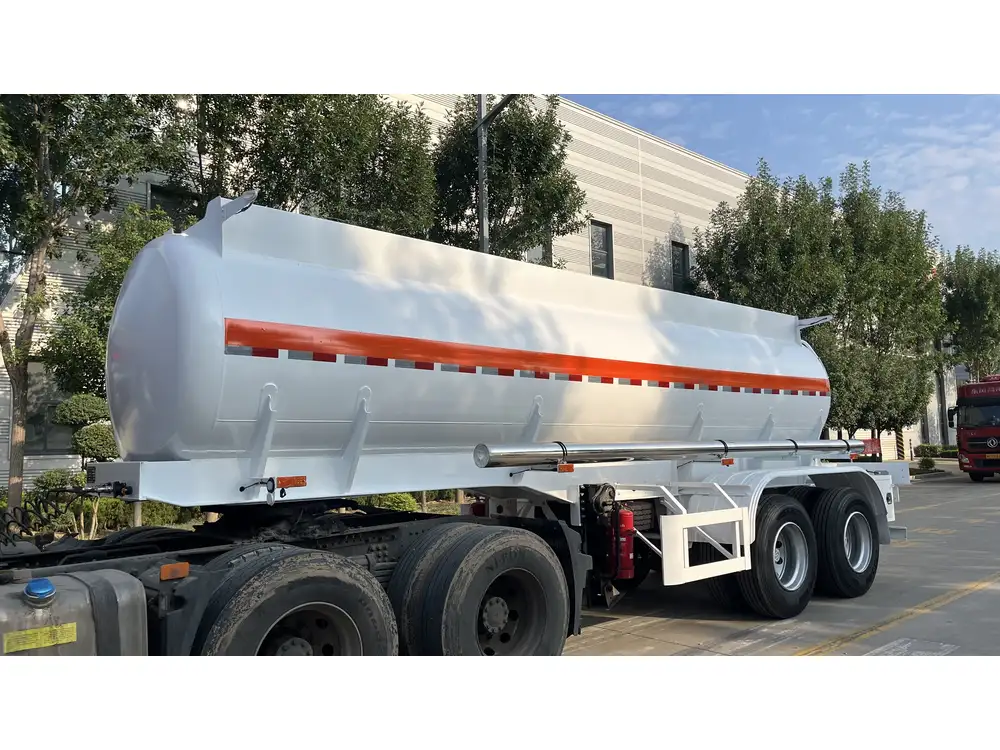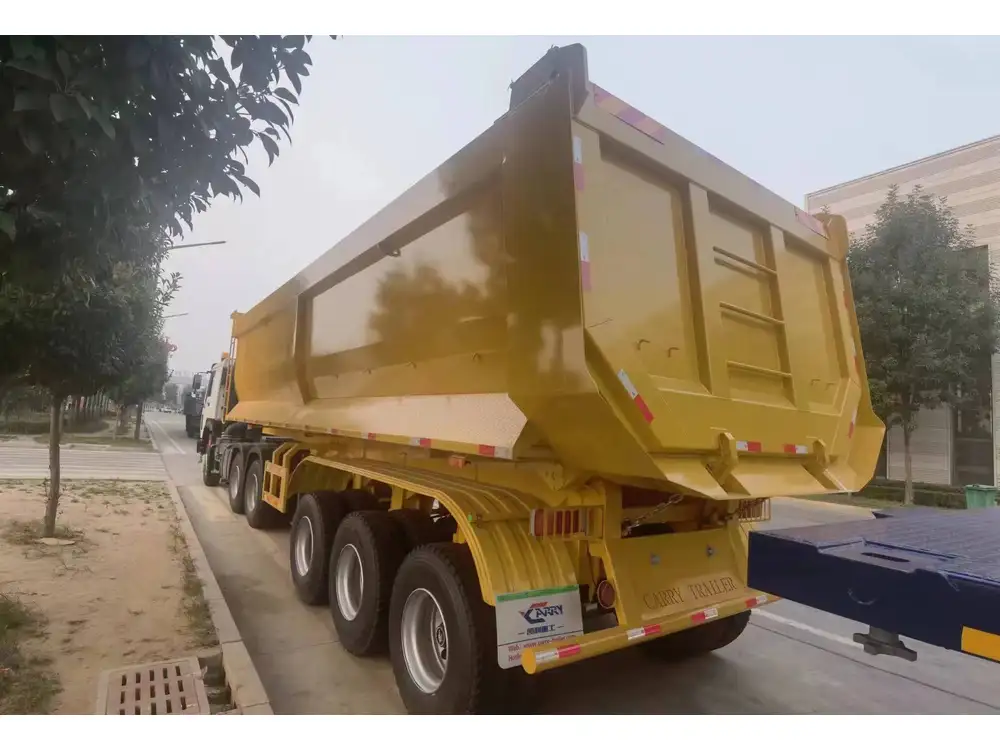When it comes to transporting firewood, whether for personal use, resale, or even landscaping purposes, utilizing the right size dump trailer is quintessential to ensure efficiency and practicality. A cord of wood represents a significant volume of firewood—measuring 128 cubic feet—and understanding how to choose the appropriate size dump trailer is vital for effective transportation. In this comprehensive guide, we will delve into nuances that will equip you with the knowledge to make an informed decision, while maximizing your operational efficiency.
Understanding a Cord of Wood
Before exploring dump trailer sizes, it is imperative to grasp what a cord of wood entails. A cord, measured as 4 feet high, 4 feet wide, and 8 feet long, holds approximately 128 cubic feet of stacked wood. The dimensions highlight the importance of both volume and the way wood is arranged. The weight of the wood can vary based on species and moisture content, but for wood that is generally seasoned, expect a weight ranging from 2,500 to 5,000 pounds.
Table: Weight Variations in Common Firewood Types
| Firewood Type | Average Weight per Cord (lbs) |
|---|---|
| Oak | 4,000 – 5,000 |
| Maple | 3,000 – 4,000 |
| Birch | 2,500 – 3,500 |
| Pine | 2,000 – 3,000 |
This suggests that considering both the weight and the volumetric measurement of firewood is critical when selecting a dump trailer.

Key Considerations for Choosing the Right Dump Trailer Size
Volume Capacity
To transport a cord of wood efficiently, you must ensure your chosen dump trailer has sufficient volume capacity. Common dump trailer sizes generally range from 5 to 16 cubic yards, but not all are equal when it comes to carrying a cord of wood.
5 Cubic Yards: Best suited for partial loads or if your wood is stacked compactly and seasonally dry. However, this size may not suffice for a full cord, especially for heavier species like oak.
10 Cubic Yards: This size can adequately hold approximately a cord of lighter wood, such as pine or processed firewood. Optimal for residential use or small deliveries.
12 to 14 Cubic Yards: Ideal for transporting a full cord of seasoned hardwood like oak or maple while providing some headroom for expansion.
16 Cubic Yards and Above: Excellent for bulk transport, but this may be excessive for a singular cord of wood unless you’re considering extra volume for hauling additional materials at the same time.
Dimensions and Deck Height
The internal dimensions of your dump trailer also play a pivotal role. Measure the trailer’s width, height, and length to ensure a comfortable fit for a cord of wood.
- Width: Most dump trailers range from 5 to 8 feet wide. Wider models can hold more wood when loaded correctly.
- Height: Ensure the deck height allows for easy loading and unloading without excessive bending or lifting. A typically preferred height is around 2.5 to 3 feet.

Weight Limitations
Understanding the weight capacities of dump trailers is crucial. It is essential to check the Gross Vehicle Weight Rating (GVWR) of your trailer. Operating beyond the legal weight limits can lead to hefty fines and safety concerns. Choosing a trailer that can support the weight of the firewood as well as the trailer weight itself is a necessary step.
Construction and Material
Robust trailers constructed from quality metal or heavy-duty materials can improve durability and longevity. Dump trailers with reinforced frames and higher-quality hydraulic systems also provide better reliability when lifting heavy loads.
Types of Dump Trailers
When considering the size of a dump trailer, it is also worth exploring the different types available that may suit your needs best. Here are key types to consider:
Standard Dump Trailer: The most common type features a simple design for transporting a variety of materials including wood.
Low Profile Dump Trailer: Ideal for homeowners needing frequent access for loading and unloading, requiring less height for lift.
Gooseneck Dump Trailer: Provides increased stability when hauling heavier loads, making it better suited for larger quantities or bulk materials.

Cost Considerations
The investment varies based on size, features, and brand. Typically, a standard 6×12 dump trailer can range from $5,000 to $10,000 depending on specifications. It is prudent to balance initial costs with functionality and expected frequency of usage.
Practical Tips for Loading and Transporting Wood
Once you determine the appropriate size dump trailer for your needs, consider the following techniques to enhance your loading and transporting experience:
Properly Load the Wood
Stack the wood correctly in the trailer, ensuring minimal void spaces. Utilize a method like the “log cabin” stacking technique, which interlocks the wood and minimizes movement while en route.
Distribute weight evenly across the trailer to maintain balance and avoid swaying during transport.

Safety Precautions
Ensure that the trailer is equipped with proper tie-down straps to secure your load and reduce the risk of shifting, especially on bumpy roads.
Maintain a lower center of gravity by loading heavier pieces closer to the trailer’s axles and lighter pieces further out.
Unloading Considerations
Utilize the dumping mechanism effectively, ensuring ample space and safety measures for both the operator and the surrounding environment.
Frequently Asked Questions (FAQs)

What is the best size dump trailer for a cord of wood?
For transporting a full cord of seasoned wood, a 12 to 14 cubic yard dump trailer is optimal. It allows enough space for stacking and unloading without overloading.
Can a smaller trailer hold a cord of wood?
While a 10 cubic yard trailer can carry lighter wood, it may not be sufficient for denser species. Always consider weight limitations and type of wood when making a choice.
How do I measure a cord of wood for my trailer?
To ensure you are within the limits, remember that a standard cord measures 4 feet high, 4 feet wide, and 8 feet long. Double-check your trailer’s dimensions against this measurement.

Is a gooseneck trailer better for heavy loads?
Yes, gooseneck trailers typically allow for better weight distribution and stability when hauling heavier loads, making them a preferred choice for transporting significant amounts of wood.
Conclusion
Selecting the right size dump trailer for a cord of wood requires a thoughtful assessment of various factors, including volume capacity, weight limitations, and the trailer’s physical dimensions. Utilizing this guide, you can determine your needs accurately and make a decision that will facilitate more efficient transport.
If you’re ready to invest in a dump trailer that’s best suited for transporting wood, consider consulting with professionals or manufacturers in the industry. They can provide tailored recommendations based on your specific needs. With the right trailer, you’ll not only maximize operational efficiency but ensure that your hauling process remains smooth and effective.



